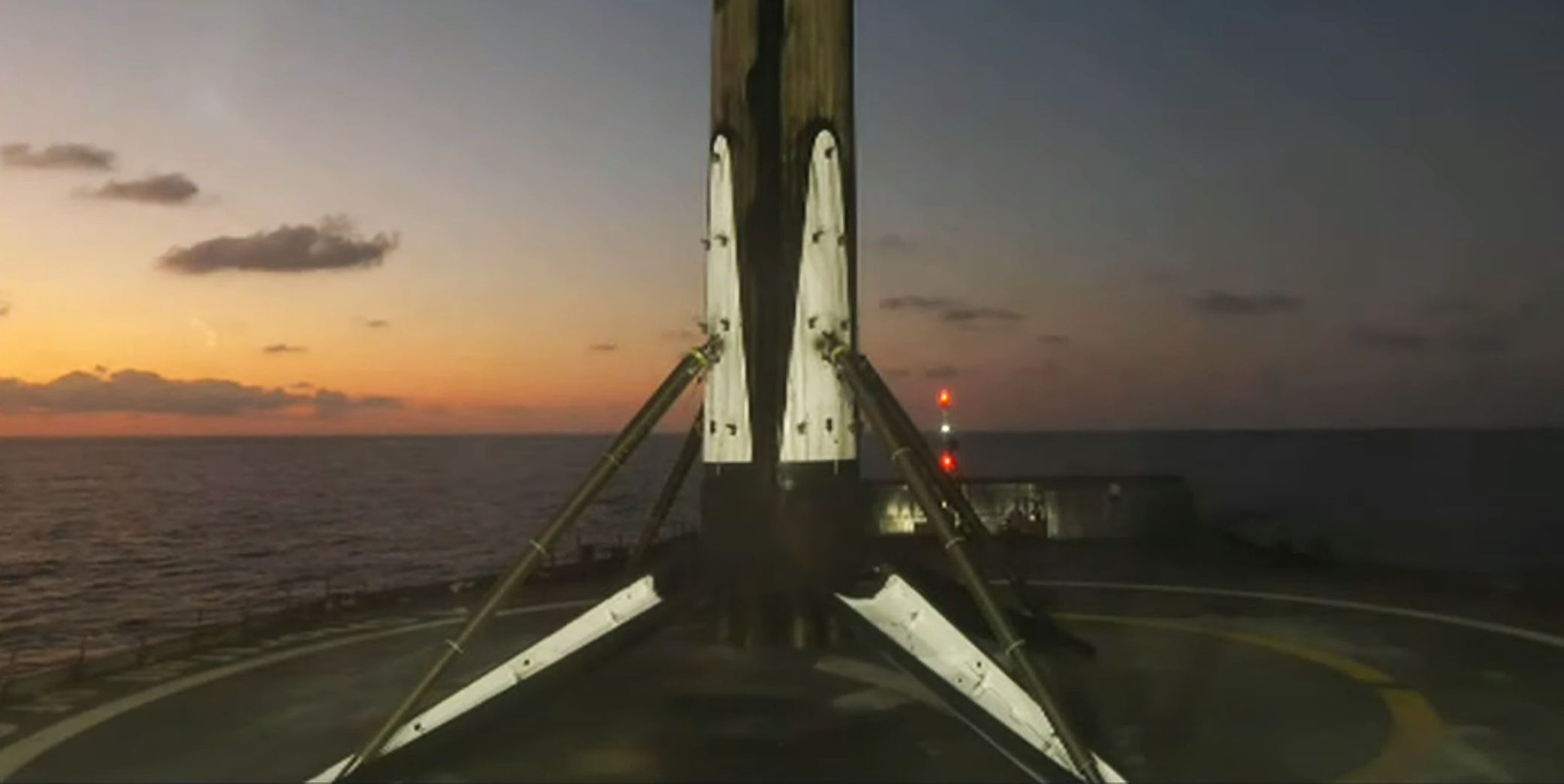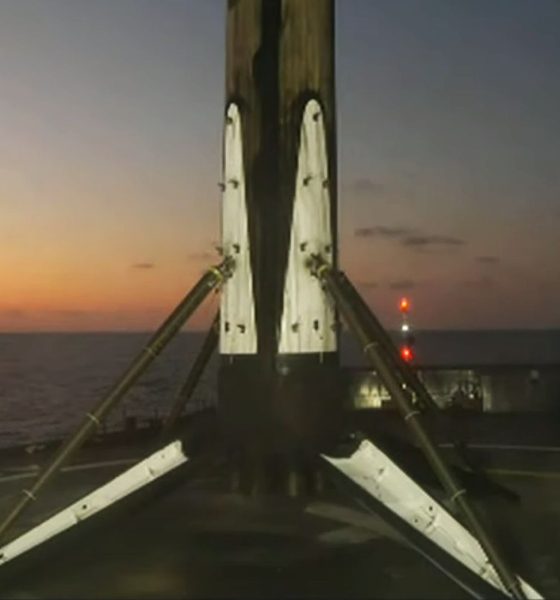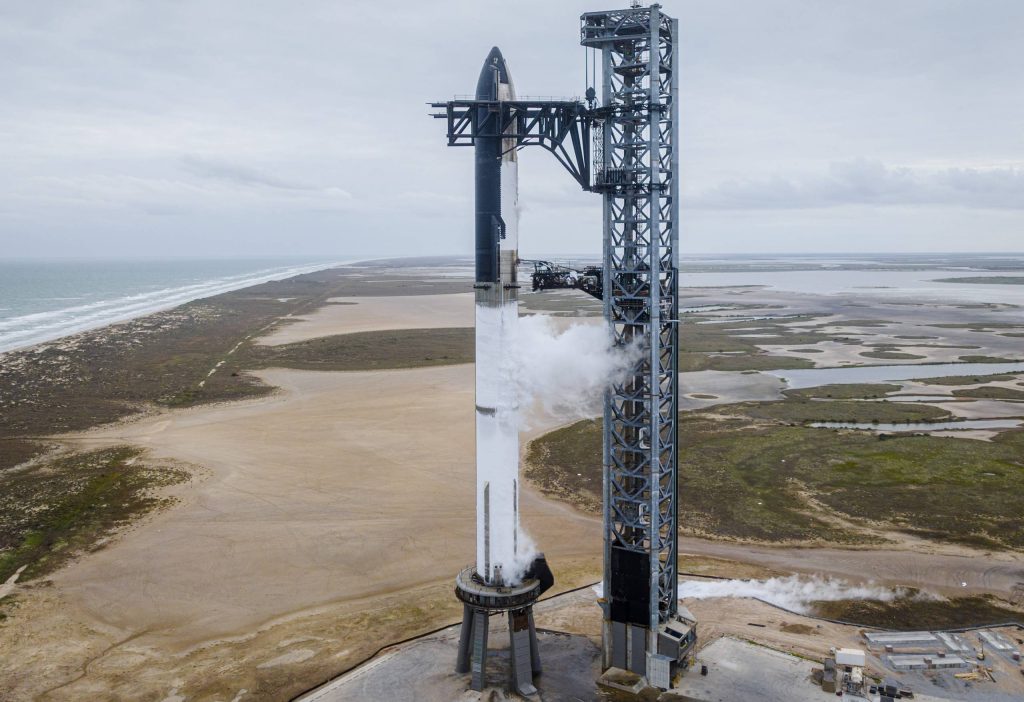

News
SpaceX Falcon rocket aces 100th consecutive rocket landing
SpaceX has successfully launched its first batch of next-generation Starlink V2 satellites, likely kicking off a new era of affordability for the constellation.
Simultaneously, demonstrating just how far SpaceX is ahead of its competitors and the rest of the spacefaring world, the Starlink 6-1 launch culminated in the 100th consecutively successful landing of a Falcon rocket booster. As a result, SpaceX’s landing reliability now rivals the launch reliability of some of the most reliable rockets ever flown. That extraordinary feat bodes well for SpaceX’s next-generation Starship rocket, which is designed to propulsively land humans on the Earth, Moon, Mars, and beyond.
The update that's rolling out to the fleet makes full use of the front and rear steering travel to minimize turning circle. In this case a reduction of 1.6 feet just over the air— Wes (@wmorrill3) April 16, 2024
SpaceX’s landing reliability milestone is made all the more impressive by the lack of immediate competition. More than seven years after SpaceX’s first successful Falcon 9 booster landing and six years after the company’s first successful Falcon booster reuse, Falcon 9 and Falcon Heavy are still the only reusable orbital-class rockets in operation.
Blue Origin has had some success reusing the first stage of its suborbital New Shepard rocket. Rocket Lab has also recovered small Electron rocket boosters from the ocean, but it’s yet to catch a booster with a helicopter – a necessity for cost-effective reuse. Many other companies have announced or begun developing their own partially or fully-reusable rockets. But even in a best-case scenario, the most promising of those potentially competitive rockets are still a year or two from their first launch attempts, let alone their first successful recoveries and reuses.
SpaceX debuted the Falcon 9 rocket behind most of its successful booster recoveries and reuses in June 2010. SpaceX recovered a Falcon 9 booster for the first time in December 2015 and reused a (different) booster for the first time in March 2017. It completed nearly all of that risky development work during launches for paying customers.
Even after the first success, many unsuccessful landing attempts followed as SpaceX pushed the performance envelope and discovered new failure modes. Falcon’s most recent landing failure occurred during a Starlink launch in February 2021 and was caused by a hole in a flexible ‘skirt’ meant to keep Earth’s superheated atmosphere out of the flight-proven booster’s engine section.
However, every landing since Falcon 9’s Starlink-19 landing failure has been successful. On February 27th, 2023, almost exactly two years after that failure, Falcon 9 booster B1076 touched down on one of SpaceX’s three drone ships, marking the rocket family’s 100th consecutively successful landing. Starlink 6-1 was also the Falcon family’s 183rd consecutively successful launch, as a Falcon landing failure has never prevented the completion of a mission’s primary objective.
Launch-wise, Falcon 9 and the Falcon family have already become the most statistically reliable rockets in history. Very few rockets in history have managed 100 consecutively successful launches, let alone landings. For example, according to spaceflight reporter Alejandro Romera, the next most reliable American rocket – the McDonnell Douglas Delta II – narrowly achieved 100 consecutively successful launches before its retirement in 2018. The landing reliability of SpaceX’s Falcon rockets is thus tied with the launch reliability of the most reliable American rocket not built by SpaceX.
Additionally, SpaceX Falcon booster landings are now statistically more reliable than the launches of United Launch Alliance’s much-touted Atlas V rocket, which has (more or less) successfully launched 97 times.

Falcon’s landing reliability is an encouraging sign for SpaceX’s next-generation Starship rocket. For Starship to fully achieve SpaceX’s goals, it will eventually need to be able to propulsively land humans on Earth and at other destinations throughout the solar system. SpaceX currently has no plans no plans to develop an independent crew escape system for Starship, meaning that the rocket itself will instead have to demonstrate extraordinary overall reliability. SpaceX executives have stated that Starship will only be deemed safe enough to launch humans once it has completed “hundreds” of successful launches and, presumably, landings.
Falcon has managed 100 successful landings in a row despite large gaps in redundancy. Most landing burns are conducted with a single Merlin 1D engine. Any issue with that engine would likely result in a failed landing. Falcon boosters also have four landing legs and four grid fins powered by a single hydraulic pump. The failure of that pump or one of four legs have demonstrably doomed earlier landings.
Starship’s much larger size and excess performance could provide a larger margin for error and allow for more redundancy. But Falcon has demonstrated that that even a rocket with multiple glaring single-points-of-failure can achieve 100 consecutively successful landings.

News
Elon Musk’s Grokipedia surges to 5.6M articles, almost 79% of English Wikipedia
The explosive growth marks a major milestone for the AI-powered online encyclopedia, which was launched by Elon Musk’s xAI just months ago.

Elon Musk’s Grokipedia has grown to an impressive 5,615,201 articles as of today, closing in on 79% of the English Wikipedia’s current total of 7,119,376 articles.
The explosive growth marks a major milestone for the AI-powered online encyclopedia, which was launched by Elon Musk’s xAI just months ago. Needless to say, it would only be a matter of time before Grokipedia exceeds English Wikipedia in sheer volume.
Grokipedia’s rapid growth
xAI’s vision for Grokipedia emphasizes neutrality, while Grok’s reasoning capabilities allow for fast drafting and fact-checking. When Elon Musk announced the initiative in late September 2025, he noted that Grokipedia would be an improvement to Wikipedia because it would be designed to avoid bias.
At the time, Musk noted that Grokipedia “is a necessary step towards the xAI goal of understanding the Universe.”
Grokipedia was launched in late October, and while xAI was careful to list it only as Version 0.1 at the time, the online encyclopedia immediately earned praise. Wikipedia co-founder Larry Sanger highlighted the project’s innovative approach, noting how it leverages AI to fill knowledge gaps and enable rapid updates. Netizens also observed how Grokipedia tends to present articles in a more objective manner compared to Wikipedia, which is edited by humans.
Elon Musk’s ambitious plans
With 5,615,201 total articles, Grokipedia has now grown to almost 79% of English Wikipedia’s article base. This is incredibly quick, though Grokipedia remains text-only for now. xAI, for its part, has now updated the online encyclopedia’s iteration to v0.2.
Elon Musk has shared bold ideas for Grokipedia, including sending a record of the entire knowledge base to space as part of xAI’s mission to preserve and expand human understanding. At some point, Musk stated that Grokipedia will be renamed to Encyclopedia Galactica, and it will be sent to the cosmos.
“When Grokipedia is good enough (long way to go), we will change the name to Encyclopedia Galactica. It will be an open source distillation of all knowledge, including audio, images and video. Join xAI to help build the sci-fi version of the Library of Alexandria!” Musk wrote, adding in a later post that “Copies will be etched in stone and sent to the Moon, Mars and beyond. This time, it will not be lost.”
News
Tesla Model 3 becomes Netherlands’ best-selling used EV in 2025
More than one in ten second-hand electric cars sold in the country last year was a Tesla Model 3.

The Tesla Model 3 became the most popular used electric car in the Netherlands in 2025, cementing its dominance well beyond the country’s new-car market.
After years at the top of Dutch EV sales charts, the Model 3 now leads the country’s second-hand EV market by a wide margin, as record used-car purchases pushed electric vehicles further into the mainstream.
Model 3 takes a commanding lead
The Netherlands recorded more than 2.1 million used car sales last year, the highest level on record. Of those, roughly 4.8%, or about 102,000 vehicles, were electric. Within that growing segment, the Tesla Model 3 stood far ahead of its competitors.
In 2025 alone, 11,338 used Model 3s changed hands, giving the car an 11.1% share of the country’s entire used EV market. That means more than one in ten second-hand electric cars sold in the country last year was a Tesla Model 3, Auto Week Netherlands reported. The scale of its lead is striking: the gap between the Model 3 and the second-place finisher, the Volkswagen ID3, is more than 6,700 vehicles.
Rivals trail as residual values shape rankings
The Volkswagen ID.3 ranked a distant second, with 4,595 used units sold and a 4.5% market share. Close behind was the Audi e-tron, which placed third with 4,236 registrations. As noted by Auto Week Netherlands, relatively low residual values likely boosted the e-tron’s appeal in the used market, despite its higher original price.
Other strong performers included the Kia Niro, the Tesla Model Y, and the Hyundai Kona, highlighting continued demand for compact and midsize electric vehicles with proven range and reliability. No other model, however, came close to matching the Model 3’s scale or market presence.
News
Tesla Model Y Standard Long Range RWD launches in Europe
The update was announced by Tesla Europe & Middle East in a post on its official social media account on X.

Tesla has expanded the Model Y lineup in Europe with the introduction of the Standard Long Range RWD variant, which offers an impressive 657 km of WLTP range.
The update was announced by Tesla Europe & Middle East in a post on its official social media account on X.
Model Y Standard Long Range RWD Details
Tesla Europe & Middle East highlighted some of the Model Y Standard Long Range RWD’s most notable specs, from its 657 km of WLTP range to its 2,118 liters of cargo volume. More importantly, Tesla also noted that the newly released variant only consumes 12.7 kWh per 100 km, making it the most efficient Model Y to date.
The Model Y Standard provides a lower entry point for consumers who wish to enter the Tesla ecosystem at the lowest possible price. While the Model 3 Standard is still more affordable, some consumers might prefer the Model Y Standard due to its larger size and crossover form factor. The fact that the Model Y Standard is equipped with Tesla’s AI4 computer also makes it ready for FSD’s eventual rollout to the region.
Top Gear’s Model Y Standard review
Top Gear‘s recent review of the Tesla Model Y Standard highlighted some of the vehicle’s most notable features, such as its impressive real-world range, stellar infotainment system, and spacious interior. As per the publication, the Model Y Standard still retains a lot of what makes Tesla’s vehicles well-rounded, even if it’s been equipped with a simplified interior.
Top Gear compared the Model Y Standard to its rivals in the same segment. “The introduction of the Standard trim brings the Model Y in line with the entry price of most of its closest competition. In fact, it’s actually cheaper than a Peugeot e-3008 and costs £5k less than an entry-level Audi Q4 e-tron. It also makes the Ford Mustang Mach-E look a little short with its higher entry price and worse range,” the publication wrote.








